Chengdu, the capital of Sichuan and legendary “Land of Abundance,” is famous for its laid-back vibe, fiery cuisine, and of course giant pandas. Whether you’re drawn by the chance to watch pandas munch bamboo or eager to sip jasmine tea in centuries-old teahouses, Chengdu welcomes every traveler. From the bamboo groves of the Giant Panda Base to the neon-lit shopping streets around Chunxi Road, the city delivers a kaleidoscope of experiences.
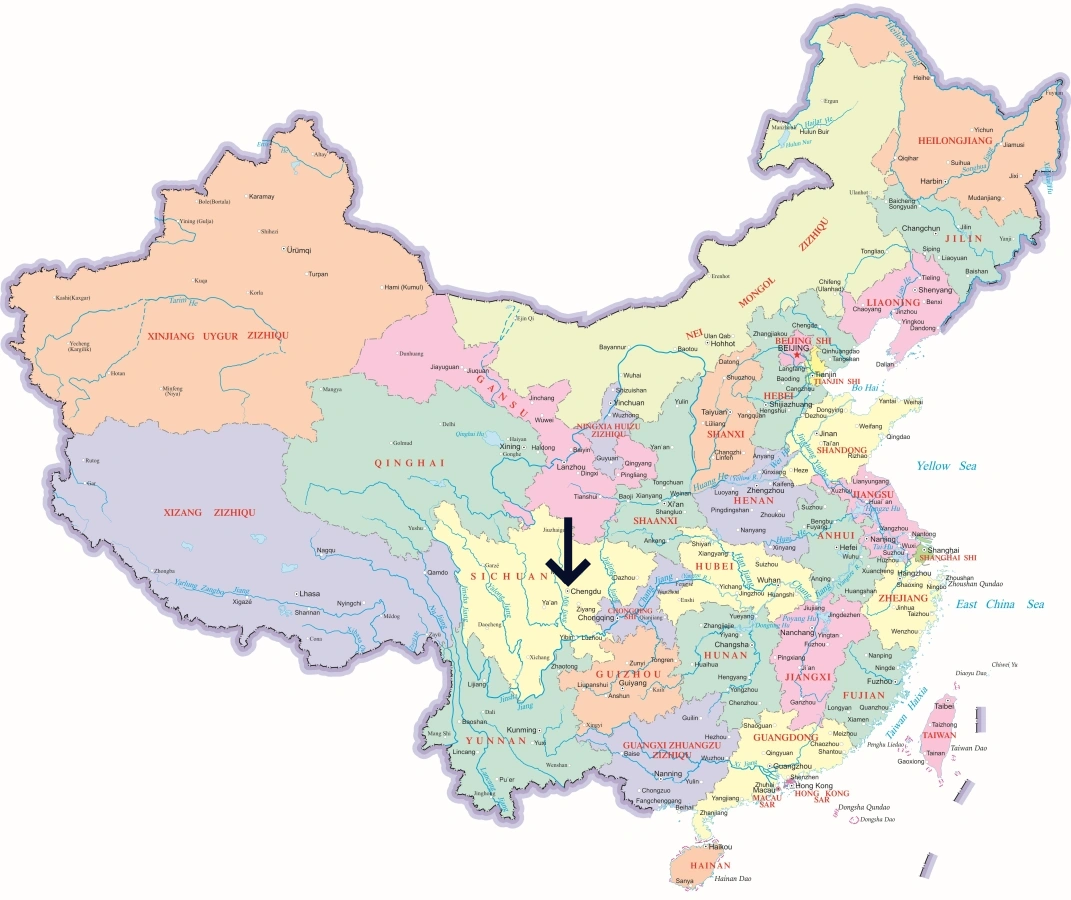
Chengdu’s highlights stretch from UNESCO-listed engineering marvels to trendy nightlife districts. Wander the atmospheric Kuanzhai Alleys, pay homage to ancient heroes at Wuhou Shrine, stroll Jinli Ancient Street for lantern-lit snacks, and head out to the nearby Leshan Giant Buddha or the mist-shrouded peaks of Mount Qingcheng. Wherever you go, expect stories that span more than two millennia.
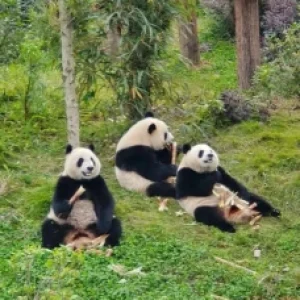
A world-famous conservation center dedicated to protecting giant pandas. Visitors can watch pandas in natural habitats, learn about breeding efforts, and explore engaging exhibitions about China’s beloved national treasure.
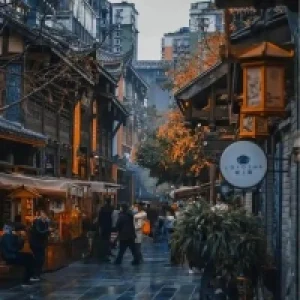
Historic pedestrian streets lined with Qing Dynasty architecture, teahouses, and shops. A great spot to experience Chengdu’s lifestyle, taste local snacks, and enjoy the city’s relaxed charm.
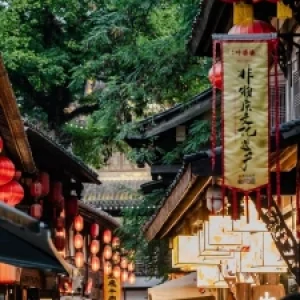
A lively cultural street near Wuhou Shrine, showcasing traditional Sichuan architecture, street food, crafts, and folk performances. It’s a perfect place to explore Chengdu’s nightlife and heritage.
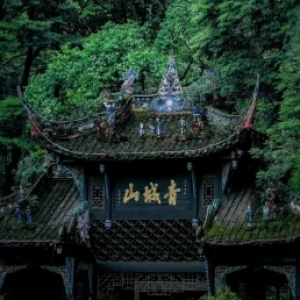
A UNESCO World Heritage Site, famous as the birthplace of Taoism. Surrounded by lush forests, ancient temples, and hiking trails, it offers a peaceful retreat from Chengdu’s busy urban life.
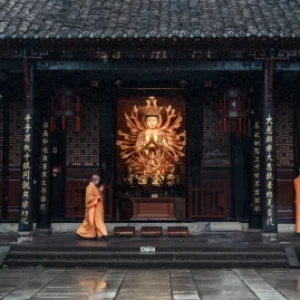
A renowned shrine dedicated to Zhuge Liang, the legendary strategist of the Three Kingdoms. It combines historical relics, tranquil gardens, and cultural significance, attracting history enthusiasts.
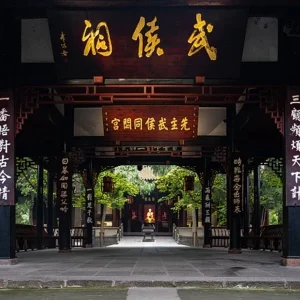
One of the best-preserved Buddhist temples in Chengdu. Known for its exquisite architecture, serene atmosphere, vegetarian food, and cultural relics, it’s a spiritual haven in the city center.

A UNESCO World Heritage Site, this ancient irrigation system built over 2,000 years ago still benefits local agriculture. Visitors admire its engineering marvels and scenic landscapes along the Min River.

Chengdu’s busiest shopping street, filled with international brands, local boutiques, street food, and modern malls. A must-visit destination for fashion lovers and those seeking Chengdu’s urban lifestyle.
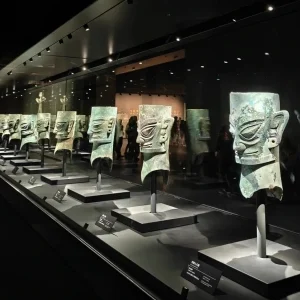
An extraordinary museum showcasing mysterious artifacts from the ancient Shu civilization. Its bronze masks, jade pieces, and gold artifacts reveal a fascinating culture that thrived over 3,000 years ago.
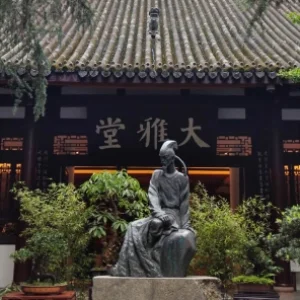
A memorial to Tang Dynasty poet Du Fu, featuring gardens, pavilions, and replicas of his original home. It offers insight into classical Chinese poetry and Chengdu’s cultural heritage.
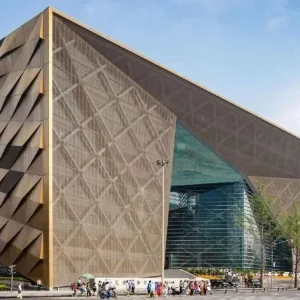
A modern museum displaying Chengdu’s history, culture, and art. With ancient artifacts, folk traditions, and interactive exhibits, it provides an in-depth understanding of the city’s rich past.
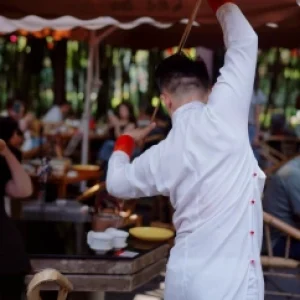
A lively urban park where locals enjoy tea houses, music, and leisure activities. Visitors can experience Chengdu’s tea culture, see matchmaking corners, and observe authentic city life.

An archaeological site and museum featuring relics of the Shu Kingdom, including golden masks, jade ornaments, and ivory artifacts. It provides valuable insights into Chengdu’s ancient civilization.
As UNESCO’s first “City of Gastronomy” in China, Chengdu is all about bold flavors and the signature má-là (numbing-spicy) kick. Try bubbling hotpot, silky Mapo Tofu, springy Dan Dan Noodles, and the locals’ guilty pleasure—spicy rabbit heads. Street snacks like Chuan Chuan (skewers) and peppery ice-cream keep adventurous palates happy.
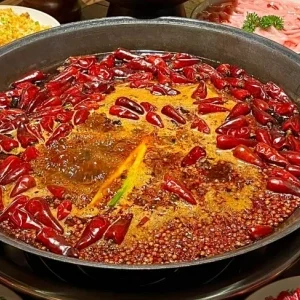
A fiery and flavorful communal meal featuring bubbling broth with Sichuan peppercorns, chili, and herbs. Diners cook meat, vegetables, and tofu in the pot, creating a spicy, numbing dining experience.
-300x300.webp)
A classic Sichuan dish made with silky tofu, minced meat, and a spicy bean paste sauce. Its bold flavors combine chili heat, numbing peppercorns, and rich umami, making it world-famous.
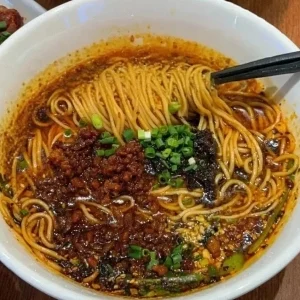
A signature Sichuan street food with noodles topped with spicy chili oil, minced pork, preserved vegetables, and peanuts. Its bold, tangy, and savory taste makes it a beloved comfort dish.
-300x300.webp)
A flavorful street snack where skewered meats and vegetables are soaked in a cold, spicy, numbing broth. It’s refreshing, aromatic, and popular for its bold chili flavor and variety.
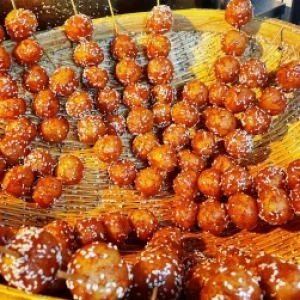
A traditional Chengdu snack made of sticky rice dough deep-fried until golden, coated with caramelized sugar. Crispy outside, soft inside, and sweet, it’s a favorite childhood treat for locals.
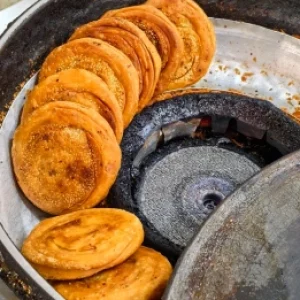
A stuffed crispy flatbread originating near Chengdu. Known for its large size, crunchy texture, and savory fillings, it’s a popular street food combining rich aroma, portability, and satisfying taste.
A fast-growing metro (13 lines and counting), plentiful buses, and inexpensive taxis make city travel easy. Two airports—Shuangliu (CTU) and the new Tianfu (TFU)—connect Chengdu with the world, while high-speed trains whisk you to Chongqing in 1 h 15 m or Xi’an in under 4 hours. Didi and Mobike apps fill in any gaps.
High-end design hotels such as The Temple House and Niccolo cluster around Taikoo Li and Tianfu Square, steps from metro hubs and nightlife. Budget travelers love hostels hidden in alleyways near Kuanzhai Alleys, while nature lovers base themselves in Dujiangyan for early-morning panda tours and mountain hikes.
With attractions, transport, food, and lodging mapped out, build an itinerary that balances slow-paced teahouse afternoons with high-energy opera nights. Catch a face-changing (变脸) performance, sip local green tea under blossoming trees, and photograph baby pandas tumbling in their nursery—memories you’ll treasure long after you leave.
Visit in spring (Mar–May) or autumn (Sep–Nov) for mild weather and clearer skies; summer is sticky and winter can be damp. Carry small bills or use Alipay/WeChat Pay for tiny eateries, and avoid the first week of October (Golden Week) when attractions are packed. An umbrella is handy year-round.
Chengdu, the capital of Sichuan Province, is one of the largest cities in western China. It covers about 14,300 sq km (including central city and suburban areas). The permanent resident population is approximately 21 million, making it one of China’s most dynamic megacities.
Here’s a breakdown by district:
Note: Population numbers are based on the latest estimates and may vary slightly.
Chengdu has a humid subtropical climate, characterized by mild winters, hot and humid summers, and cloudy, damp conditions throughout the year. The city is known for its overcast skies, with fewer sunshine hours compared to many Chinese cities.
Here’s what to expect month by month:
Best travel season: March to May and September to November.
Here are the postal and telephone codes for major districts in Chengdu:
Explore detailed travel guides for China’s most popular cities, covering attractions, local food, accommodations, and transportation tips.

 English (US)
English (US)